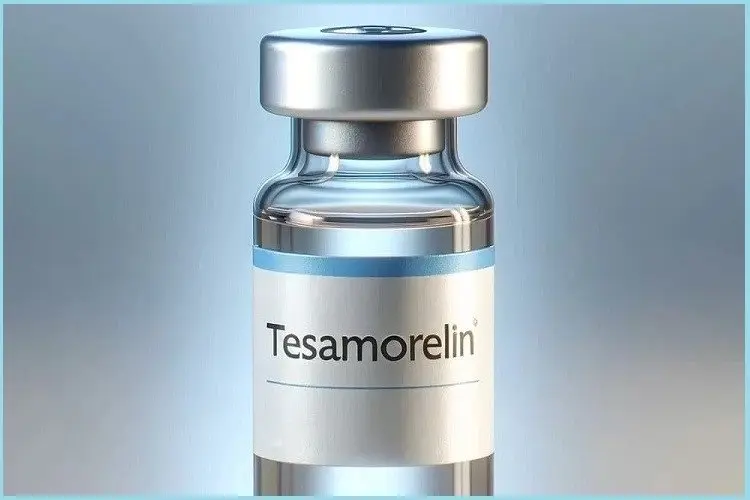What is Tesamorelin?

What is Tesamorelin?
Tesamorelin: A Beacon of Hope in the Battle Against Lipodystrophy
In the ever-evolving landscape of medical science, the quest to alleviate the symptoms and consequences of chronic conditions remains a paramount challenge. Among these efforts, the development and application of Tesamorelin has emerged as a significant milestone, particularly in the treatment of HIV-associated lipodystrophy. This synthetic peptide, mirroring the human growth hormone-releasing factor (GHRF), has paved new avenues in therapeutic interventions, offering hope and enhanced quality of life to those it serves. This essay endeavors to unravel the complexities of Tesamorelin, exploring its origins, mechanisms, applications, benefits, and considerations.
Origins and Development of Tesamorelin
The journey of Tesamorelin began in the realm of endocrinology and metabolic diseases, borne out of the need to address the disproportionate distribution of body fat in patients suffering from HIV-associated lipodystrophy. This condition not only affects physical appearance but also exacerbates the risk of cardiovascular diseases. Researchers, in their pursuit to find a viable treatment, turned their attention to the potential of human growth hormone (HGH) in modulating body composition. However, direct administration of HGH posed significant side effects, necessitating the exploration of safer alternatives. This led to the birth of Tesamorelin, a synthetic analogue of GHRF, designed to stimulate the body's natural production of HGH, thereby mitigating the associated risks of direct HGH administration.
The Mechanism of Action
Tesamorelin exerts its therapeutic effects through a finely-tuned mechanism of action centered around the pituitary gland. By mimicking the natural growth hormone-releasing factor, it binds to receptors on the pituitary cells, signaling the gland to secrete HGH in a pulsatile fashion. This increase in HGH levels circulates to various organs and tissues, particularly targeting metabolic pathways involved in lipid and glucose metabolism. The catalytic outcome of this process is the mobilization and reduction of visceral adipose tissue, the harmful deep abdominal fat associated with metabolic irregularities.
Applications and Benefits
The primary application of Tesamorelin is in the treatment of HIV-associated lipodystrophy, a condition marked by the abnormal accumulation of fat in certain areas of the body and loss of fat in others, which can profoundly impact the physical and psychological well-being of affected individuals. Clinical trials and studies have consistently demonstrated Tesamorelin's efficacy in reducing visceral fat in this patient population, thereby improving metabolic profiles and reducing the risk of cardiovascular diseases. Furthermore, the improvement in body image and self-esteem contributes significantly to the psychological health of the patients.
Beyond its application in HIV-associated conditions, emerging research suggests potential benefits of Tesamorelin in addressing age-related metabolic declines, non-alcoholic fatty liver disease (NAFLD), and in the pursuit of anti-aging and longevity. However, it's worth noting that while the prospect of Tesamorelin in these areas is promising, further research and clinical trials are warranted to fully understand its efficacy and safety profile across different populations and conditions.
Considerations and Side Effects
While Tesamorelin heralds a new era in the management of lipodystrophy, it is not without its considerations and potential side effects. Commonly reported side effects include injection site reactions, joint pain, and muscle aches, which are generally mild and transient. However, given its mechanism of action, Tesamorelin may not be suitable for individuals with a history of pituitary tumors or those with active malignancies, as the increase in HGH levels could theoretically exacerbate these conditions. Therefore, a thorough medical evaluation and monitoring are paramount to ensure its safe use.
Conclusion
Tesamorelin stands as a testament to the power of scientific innovation and targeted therapy in addressing complex medical conditions. By harnessing the body's natural hormone regulatory systems, it offers a sophisticated approach to managing lipodystrophy, particularly in the context of HIV. Its development not only marks a significant advance in the therapeutic landscape but also embodies the relentless pursuit of medical science to improve human health and wellbeing. As we continue to explore and understand the full potential of Tesamorelin, it remains a beacon of hope for those grappling with the physical and psychological burdens of lipodystrophy, heralding a future where these challenges can be effectively mitigated or potentially overcome.
References:
Articles

Dragon Pharma Anavar stands at the pinnacle of performance-enhancing drugs, designed to redefine your physical capabilities and push you beyond your limits. This phenomenal oral steroid has garnered widespread acclaim for its effectiveness in promoting rapid muscle growth, enhancing strength, and facilitating a lean, well-defined physique. As a leading name in the industry, Dragon Pharma ensures that each batch of Anavar...

What is Liothyronine? Liothyronine is a component to support hypothyroidism issues and myxedema coma, which can be taken by injection and by mouth. It might have a certain side effects such as weight loss, headache, fever, headache, as well as anxiety. It may be thyroid cancer or T4 or T3 peripheral tissues that can be countered with Liothyronine. Hypothyroidism can be lowered with this component as oral or injectable.

Boldenone Undecylenate, also known as Equipoise, is an anabolic androgenic steroid (AAS) derived from testosterone. It was initially developed in the 1950s as a veterinary steroid for treatment of horses, but has since been used in humans in various medically supervised settings. As an AAS, Boldenone Undecylenate is a synthetic form of testosterone, which is known to increase muscle mass and strength,...
Customers Feedbacks
Please leave your feedback on products or service below.
Thank you beforehand.


